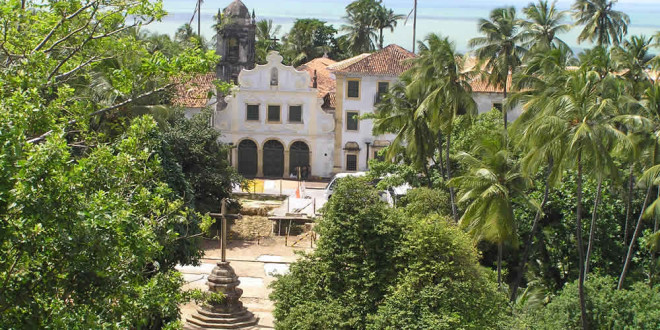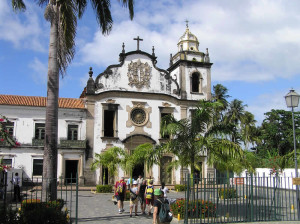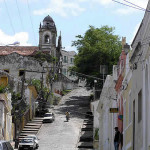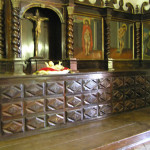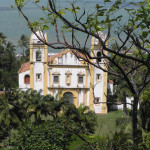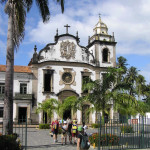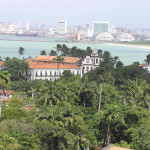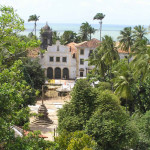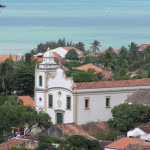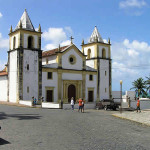Written by Marco Ramerini. English text revision by Dietrich Köster.
The city of Olinda, which is located a few kilometers north of Recife, was founded by the Portuguese in 1535 and was one of the first settlements founded by Europeans in Brazil. At the beginning of the 17th century the city became the capital of the capitania of Pernambuco, but after the Dutch occupation of northeastern Brazil Olinda was burned by the Dutch, because it did not provide adequate defense and in its place, as the main center of the colony of New Holland, was chosen Recife. With the return of the Portuguese, Olinda flourished again, becoming once again the capital of Pernambuco.
Olinda is a place for walks in the streets, visit to churches and museums and observation of scenarios, which mix blue sea, green vegetation and historical buildings. Olinda has churches rich in ornaments and wood carvings and also single chapels, most of them were built in the 16th and 17th centuries and show Baroque images and architecture. Among them are the Mosteiro de São Bento built in 1582. It has a gold-plated altar and is said to be the richest in the city.
Convento de São Francisco built in 1577, being the first Franciscan monastery in Brazil. The complex is formed by the Igreja de Nossa Senhora das Neves, the Capela de São Roque and the Claustro de Azulejos. The Igreja de Nossa Senhora do Carmo was probably the first Carmelitan Order church in Brazil. It was built around 1580-1620 and rebuilt in the 18th century. The Cathedral (Sé), originally built in 1537, later rebuilt, is lying in a privileged place, overlooking the entire old town.
The harmonious balance between the buildings, gardens, 20 Baroque churches, convents and numerous small chapels all contribute to Olinda’s particular charm. The historic center of Olinda is since 1982 in the World Heritage list of UNESCO.
- A street in Olinda, Brazil. Author and Copyright Marco Ramerini
- Sacresty, Catedral da Sé, Olinda, Pernambuco, Brazil. Author and Copyright Marco Ramerini
- Igreja de Nossa Senhora do Carmo, Olinda, Pernambuco, Brazil. Author and Copyright Marco Ramerini
- Mosteiro de São Bento, Olinda. Author and Copyright Marco Ramerini
- A view of Olinda with Recife on the background, Pernambuco, Brazil. Author and Copyright Marco Ramerini
- Convento de São Francisco, Olinda, Pernambuco, Brasil. Autor e Copyright Marco Ramerini
- Igreja de São Pedro Apóstolo, Olinda, Pernambuco, Brazil. Author and Copyright Marco Ramerini
- Catedrale da Sé, Olinda, Pernambuco, Brazil. Author and Copyright Marco Ramerini
 Colonial Voyage The website dedicated to the Colonial History
Colonial Voyage The website dedicated to the Colonial History
